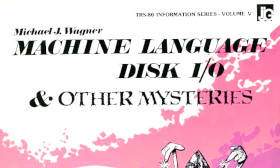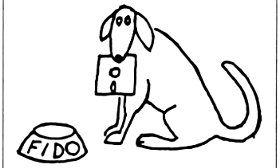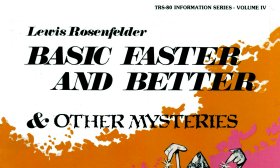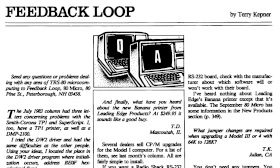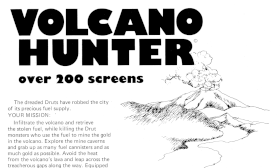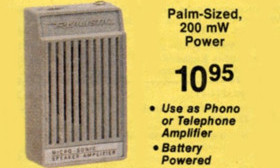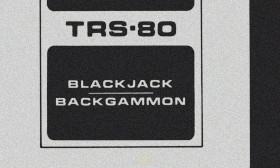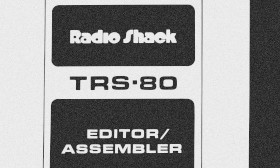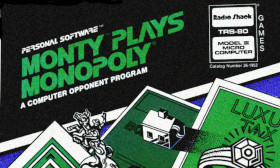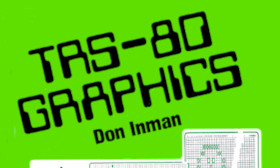Low-level floppy disk access was one of the most advanced programming topics on the TRS-80 Model I and III. The floppy disk controller was documented in technical reference manuals, as was the TRS-80 disk interface itself. But translating that information into reliable disk access routines wasn’t easy. All disk operating systems and low-level disk utilities did it, but the difference between working and excellent implementations was great. Kim Watt (with Super Utility) and Vernon Hester (with MULTIDOS) proved that it was possible to write fast and bullet-proof disk routines, but the methods they used weren’t documented anywhere.
Machine Language Disk I/O and Other Mysteries by Michael J. Wagner, volume 5 in IJG’s TRS-80 Information Series, was one of the few sources of reliable information about low-level TRS-80 floppy disk access. It cost $29.95 when it was released in 1982. A 1983 review by John B. Harrell, III in 80 Micro described it as an “expertly assembled, compact, and fact-filled book” and “a perfect reference source for any programmer who would like to try his hand at disk I/O programming.”
(Read more...)
FidoNet is a private network connecting bulletin board systems. Unlike most other similar networks, FidoNet still exists today. Created by Tom Jennings in 1984, FidoNet provided a way for ordinary people to communicate across bulletin board systems long before Internet access was available to the general public. FidoNet wasn’t (and isn’t) the only service to interconnect bulletin board systems, but it was the most popular. Jennings described it in 1999 as “largest privately owned computer network in the world.” At its peak in the 1990’s, there were over 30,000 systems on FidoNet.
Tom Jennings created FidoNet in 1984 as part of his Fido BBS. At the time, bulletin board systems only allowed a user to send messages to another user on the same system. FidoNet identified each system by node and provided a way to send a message to any remote system that was part of FidoNet. Jennings later described it as a “store-and-forward emailing and file-transmission system.”
(Read more...)
BASIC Faster and Better and Other Mysteries, also known as BASIC Faster and Better, is one of the best books about advanced BASIC programming on the TRS-80. It was written by Lewis Rosenfelder and published by IJG, Inc.
The book, which was volume 4 in IJG’s TRS-80 Information Series, cost $29.95 when it was introduced in 1981. Radio Shack also sold it as BASIC Faster and Better (catalog number 62-1002) for the same price, describing it in their catalog as “a guided tour of advanced BASIC programming.” A review in 80 Microcomputing stated:
The book is worth the money no matter what level of programming ability you possess.
(Read more...)
“Feedback Loop” was a popular column in 80 Microcomputing magazine. It began in the June/July 1982 issue and ran until the magazine ended in 1988. “Feedback Loop” answered reader letters about “any questions or problems dealing with any area of TRS-80 microcomputing”. It was one of the best sources of TRS-80 information available at the time.
“Feedback Loop” was written by Terry Kepner for most of its run. It replaced “The Exclusive Oracle”, a similar column written by Dennis Báthory-Kitsz that also answered reader questions.
(Read more...)
Volcano Hunter was one of the final games to be commercially released for the TRS-80 Model I and III. It was written by David Smith and sold through his company, Lap Video Entertainment. It cost $19.95 for the cassette version and $22.95 for the disk version. A review in 80 Micro described Volcano Hunter as an “ingenious machine-language, arcade-style adventure game.”
Here is David Smith’s description of the game:
You are HUNTING HARRY, the last person left in a town taken over by Druts. (A Drut is a monster that usually lives inside the earth near volcanoes.) The town you live in just happens to be near a volcano. The dreaded Druts have been mining the volcano for its gold, but they have run into a problem. They ran out of fuel for their machines to mine the volcano. So they robbed the city of its precious fuel supply and they plan to keep it. It is your duty to infiltrate the volcano and retrieve the stolen fuel, while killing the Drut monsters who will try and stop you. It may take you a while to find all the fuels because there are over 200 screens in this adventure.
(Read more...)
The Radio Shack Speaker-Amplifier (catalog number 277-1008) was a small 9-volt battery-powered speaker with volume control that had many different uses. In the TRS-80 world, it was the recommended way to hear sound in TRS-80 Model I/III/4 games. The Speaker-Amplifier (or Amplifier-Speaker) was sold for almost 50 years, from 1968 to 2017. It cost $6.95 in 1968 and that price increased to $11.99 by the time it was discontinued. Although it always used the same model number, there many different designs and different names over the years:
- Realistic Micro-Sonic Speaker-Amplifier from 1968 to 1980
- Archer Mini-Amplifier-Speaker from 1980 to 1998
- RadioShack Mini Amplifier-Speaker from 1998 to 2017
(Read more...)
By 1979, the TRS-80 Model I was regarded as having the largest software library of any microcomputer on the market. But when the Model I was introduced in 1977, it had only five pieces of software available. Only one of those was bundled with the computer: Blackjack/Backgammon, also known as Game Package.
Radio Shack’s original August 1977 press release for the TRS-80 mentioned that “a variety of game programs will be available, including blackjack and backgammon.”
(Read more...)
The TRS-80 Editor/Assembler (catalog number 26-2002), better known as EDTASM, was an assembly language programming tool for the cassette TRS-80 Model I. It was introduced in 1978 and cost $29.95. EDTASM was such a common tool that its name (and associated file format) became a kind of shorthand for TRS-80 assembler.
EDTASM was written by Mark Chamberlin of Microsoft and licensed to Radio Shack. A Radio Shack catalog stated:
Microsoft, an industry leader in systems software, has developed this program … so you can expect the ultimate in editing features.
(Read more...)
Monty Plays Monopoly was a “computer opponent program” that allowed a TRS-80 owner to play the popular Monopoly board game. There were two TRS-80 versions of Monty Plays Monopoly:
- The original 1980 version by Ritam Corporation of Fairfield, Iowa, which was available for the 16K cassette and 32K disk Model I. This version was distributed by Personal Software. (Personal Software, later renamed VisiCorp, was better known for their VisiCalc spreadsheet.) Ritam also sold a version for the Apple II for both cassette and disk.
- Ritam Corporation also licensed Monty Plays Monopoly through Personal Software to Tandy Corporation. This version (catalog number 26-1952) cost $34.95 and was released in 1982. It was only available for the 32K disk Model III. This is the most common TRS-80 version.
Unlike later Monopoly programs, Monty Plays Monopoly wasn’t designed to replace the board game but to supplement it. In fact, it requires “the board and all the equipment that comes with the game”, according to the manual.
(Read more...)
Introduction to TRS-80 Graphics (catalog number 62-2063), also known as TRS-80 Graphics, was a book describing how to make best use of the block graphics of the TRS-80 Model I. It was written by Don Inman and cost $5.95 from Radio Shack. Like many of the books sold by Radio Shack, there were two editions of the book with two different covers: one was sold by Radio Shack and the other was sold by dilithium Press. (The name dilithium was intentionally lowercase.) Other than the covers, the books were identical.
The focus of Introduction to TRS-80 Graphics was entirely on “understanding the graphics capabilities of the TRS-80 computer using Level I BASIC.” As the book stated: “No attempt is made to teach programming in BASIC.” A dilithium Press advertisement described it this way:
For those who want to do more with graphics, this excellent self-instruction text provides a complete introduction to the basics of graphics programming using dozens of examples.
(Read more...)
